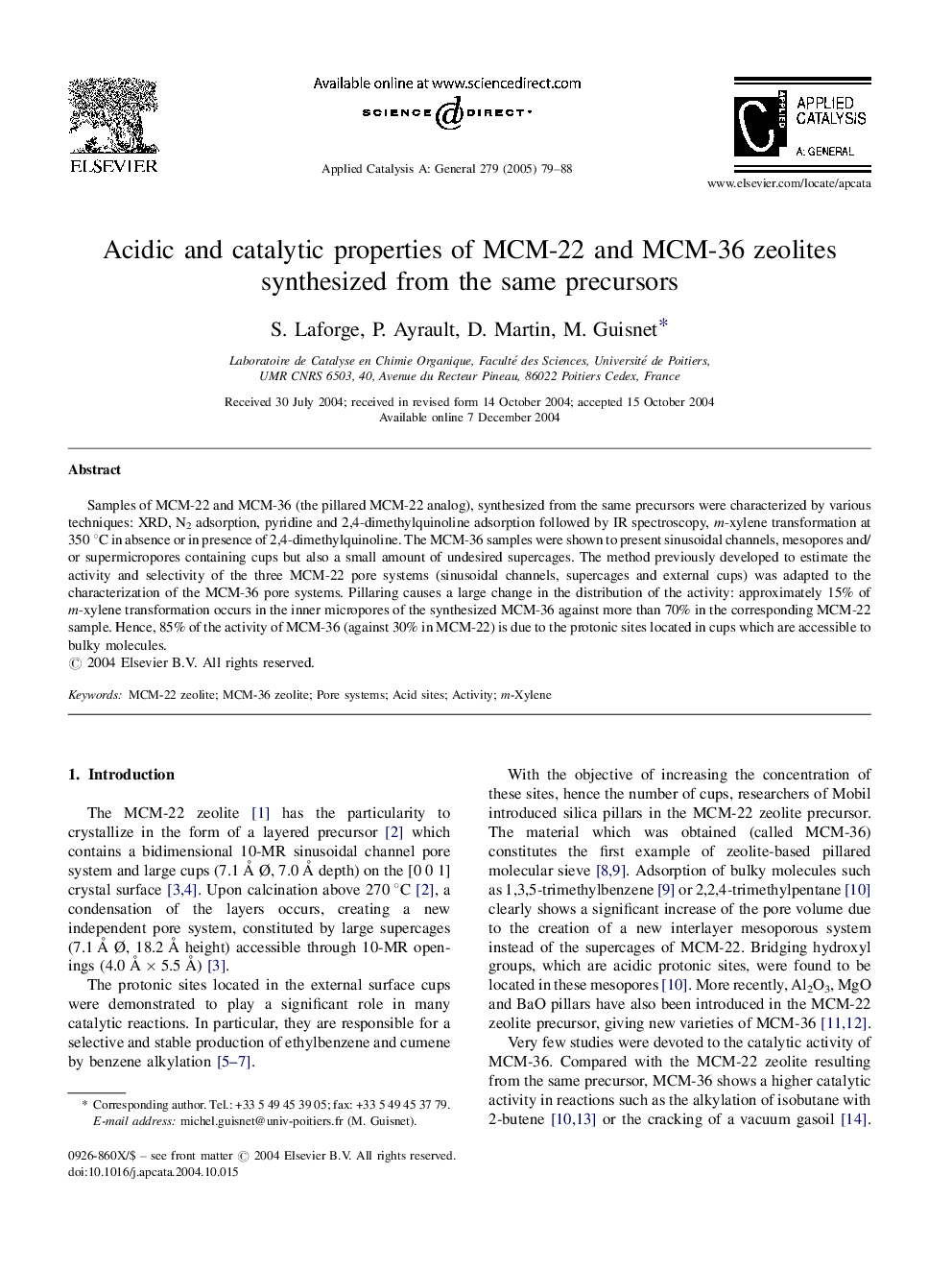| Article ID | Journal | Published Year | Pages | File Type |
|---|---|---|---|---|
| 9608137 | Applied Catalysis A: General | 2005 | 10 Pages |
Abstract
Samples of MCM-22 and MCM-36 (the pillared MCM-22 analog), synthesized from the same precursors were characterized by various techniques: XRD, N2 adsorption, pyridine and 2,4-dimethylquinoline adsorption followed by IR spectroscopy, m-xylene transformation at 350 °C in absence or in presence of 2,4-dimethylquinoline. The MCM-36 samples were shown to present sinusoidal channels, mesopores and/or supermicropores containing cups but also a small amount of undesired supercages. The method previously developed to estimate the activity and selectivity of the three MCM-22 pore systems (sinusoidal channels, supercages and external cups) was adapted to the characterization of the MCM-36 pore systems. Pillaring causes a large change in the distribution of the activity: approximately 15% of m-xylene transformation occurs in the inner micropores of the synthesized MCM-36 against more than 70% in the corresponding MCM-22 sample. Hence, 85% of the activity of MCM-36 (against 30% in MCM-22) is due to the protonic sites located in cups which are accessible to bulky molecules.
Related Topics
Physical Sciences and Engineering
Chemical Engineering
Catalysis
Authors
S. Laforge, P. Ayrault, D. Martin, M. Guisnet,
